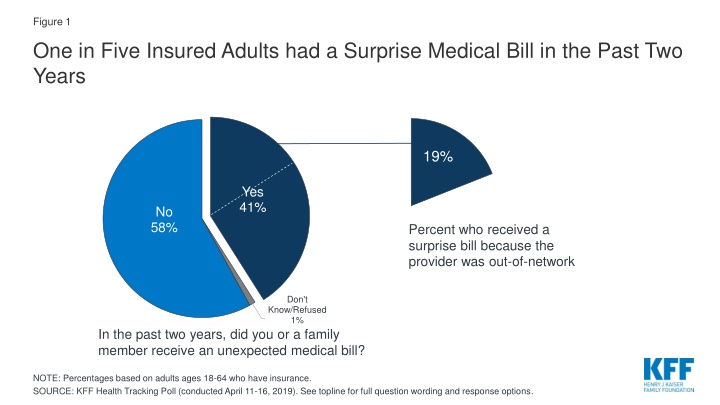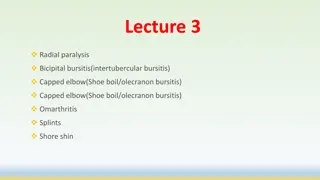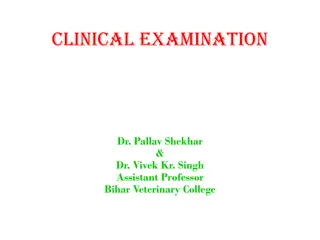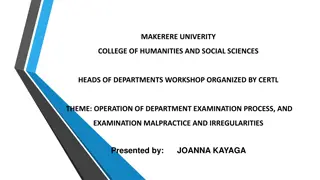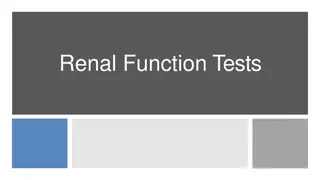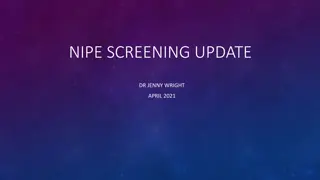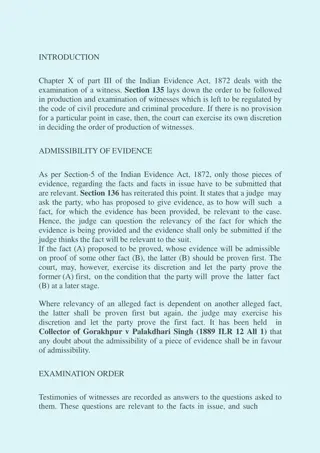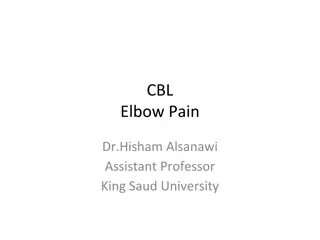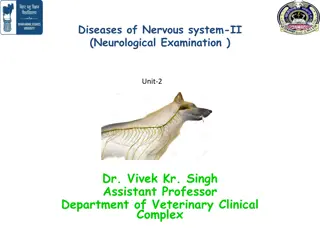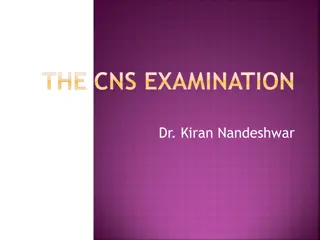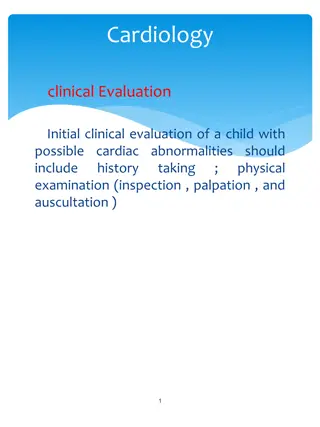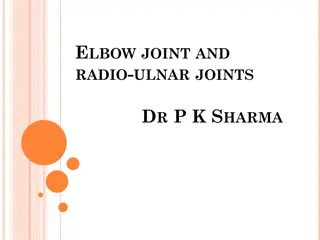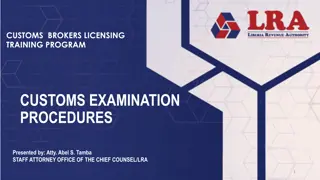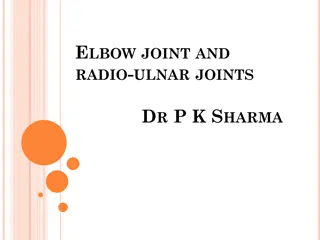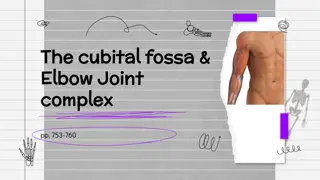Elbow and Forearm Examination for U/E Function and Stability
In this detailed examination guide, you will find information on the anatomy, important articulations, stabilizers, ligaments, structural prominences, functional ranges, and tests for assessing elbow and forearm stability. Understand the crucial aspects of ulnohumeral, radiocapitellar, and PRUJ joints, as well as the significance of MCL, LCL, LUCL, and annular ligaments. Discover essential tests for ligament stability and functional ranges for daily activities. Explore the SEADS, carrying angle, and pronation-supination functions, along with specific maneuvers for assessing ligament stability.
Download Presentation

Please find below an Image/Link to download the presentation.
The content on the website is provided AS IS for your information and personal use only. It may not be sold, licensed, or shared on other websites without obtaining consent from the author.If you encounter any issues during the download, it is possible that the publisher has removed the file from their server.
You are allowed to download the files provided on this website for personal or commercial use, subject to the condition that they are used lawfully. All files are the property of their respective owners.
The content on the website is provided AS IS for your information and personal use only. It may not be sold, licensed, or shared on other websites without obtaining consent from the author.
E N D
Presentation Transcript
Figure 1 One in Five Insured Adults had a Surprise Medical Bill in the Past Two Years 19% Yes 41% No 58% Percent who received a surprise bill because the provider was out-of-network Don't Know/Refused 1% In the past two years, did you or a family member receive an unexpected medical bill? NOTE: Percentages based on adults ages 18-64 who have insurance. SOURCE: KFF Health Tracking Poll (conducted April 11-16, 2019). See topline for full question wording and response options.
Figure 2 Two-Thirds of Adults are Worried about being Able to Afford Unexpected Medical Bills Percent who say they are worried about being able to afford each of the following for themselves and their family: Unexpected medical bills 67% Health insurance deductible* 53% Gasoline or other transportation costs 46% Prescription drug costs 44% Monthly utilities like electricity or heat 43% Monthly health insurance premium* 42% Rent or mortgage 41% Food 36% NOTE: *Among insured. Not applicable (Vol.) and Don t know/Refused responses not shown. Question wording modified. See topline for full question wording. SOURCE: KFF Health Tracking Poll (conducted August 23-28, 2018)
Figure 3 On Average, 18% Of Emergency Department Visits Result In At Least One Surprise Bill, But The Rate Varies By State Among people with large employer coverage, the share of emergency visits with at least one out-of-network charge (2017) * These nine states have enacted comprehensive laws to address surprise bills, but the issue persists in these states since the majority of people with private insurance are covered by plans that can only be regulated at the federal level. SOURCE: KFF analysis of IBM Marketscan 2017 data
Figure 4 Majorities Support Government Action to Protect Against Surprise Bills Percent who say the federal government should take action to protect patients from having to pay the cost not covered by their insurance for care received in each of the following situations: DEMOCRATS REPUBLICANS Having an emergency and are taken to an out-of-network hospital 90% 61% Having an emergency and are taken to an ER by an out-of-network ambulance 91% 62% Receiving care at an in-network hospital but are treated by an out-of-network doctor 88% 60% SOURCE: KFF Health Tracking Poll (conducted April 11-16, 2019). See topline for full question wording and response options.
Figure 5 Several Federal Bipartisan Bills Have Been Introduced So Far* To Address Surprise Billing Bills Key Payment Provisions Key Patient Protections in All Bills Insurers reimburse providers (physicians/hospitals) for surprise bills based on benchmarked median in-network rate Health plans must cover out-of-network emergency bills Health plans must cover bills from out-of- network doctors within in-network facilities In-network cost sharing applies to all surprise bills Surprise bill providers cannot collect more than in-network cost sharing amount from patients These rules apply to all group and individual plans Senate HELP Committee bill (S 1895) - - - Insurers reimburse providers for surprise bills based on benchmarked median in-network rate Provider can request independent dispute resolution (IDR) process if surprise bill is at least $1,250. Losing party pays IDR process fee Surprise bill is paid based on IDR process, which takes into account 80th percentile of billed charges, among other factors. Losing party pays IDR process fee House Energy and Commerce bill (HR 2328) - - - - - Ruiz/Roe bill (HR 3502) - *Two additional House Committees with jurisdiction the Ways & Means and Education & Labor Committees are also considering legislation on surprise billing
